Wet.Ware Barcelona
Wet.Ware Barcelona explores opportunities to create new ecologies through examining and integrating biological processes with existing urban networks.
An Analysis
_site _plot i
Situated along the eastern coast of Barcelona and constituting an area of 3km x 3km our site contains a diverse range of typologies including bodies of water, dense & dispersed urban build up and areas of vegetation.
A particular area of interest is the definitive threshold between the city and the sea, segregating the urban and natural realm. This threshold and relationship between man made and natural ecologies will be the focus of our project.
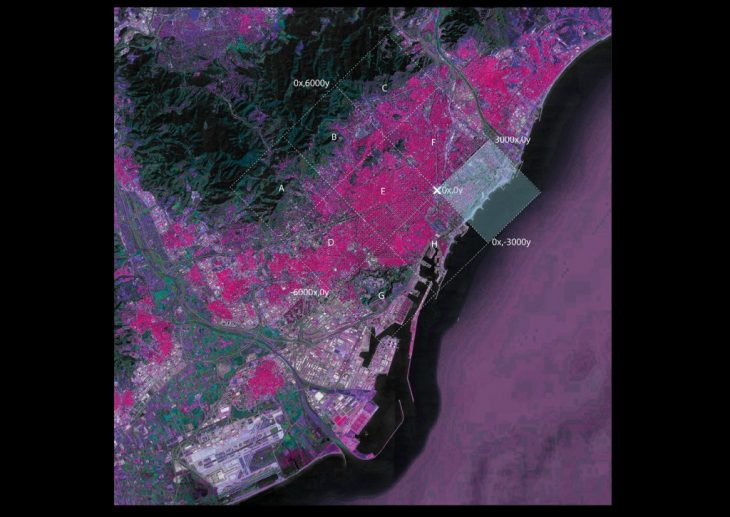
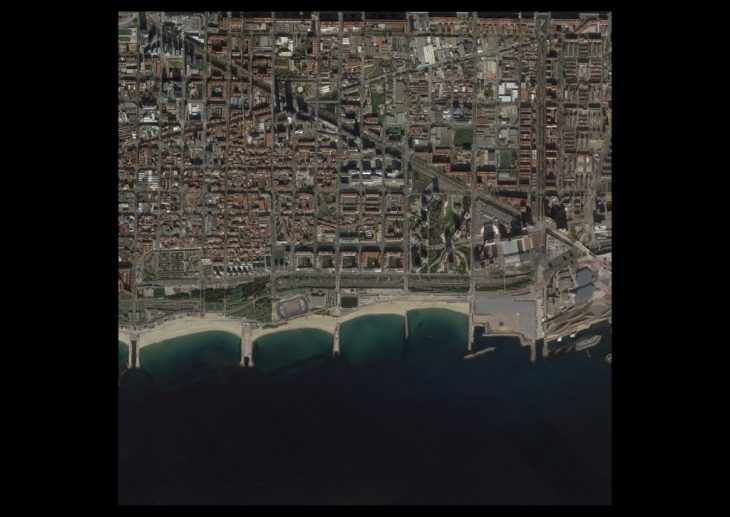
_hydro field
Areas containing moisture (the water body & areas of vegetation) were overlayed onto a base map in order to begin our examination
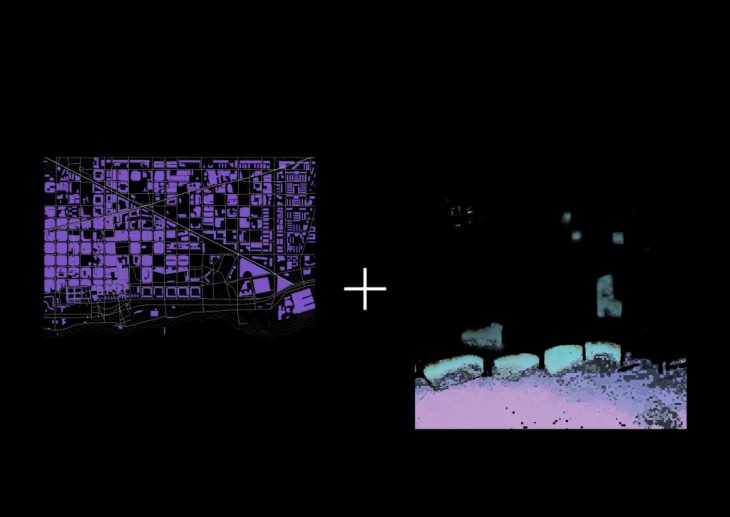
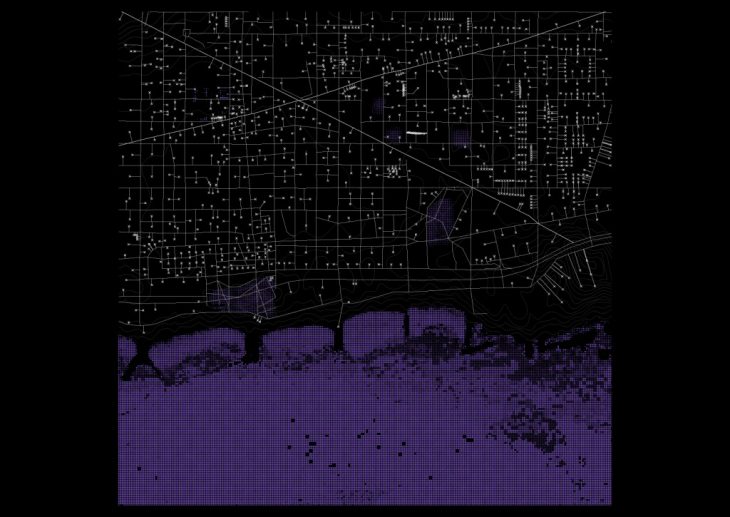
_biotic field
The same process as above was repeated for the biotic field, illustrating the pattern of organic density & intensity across the site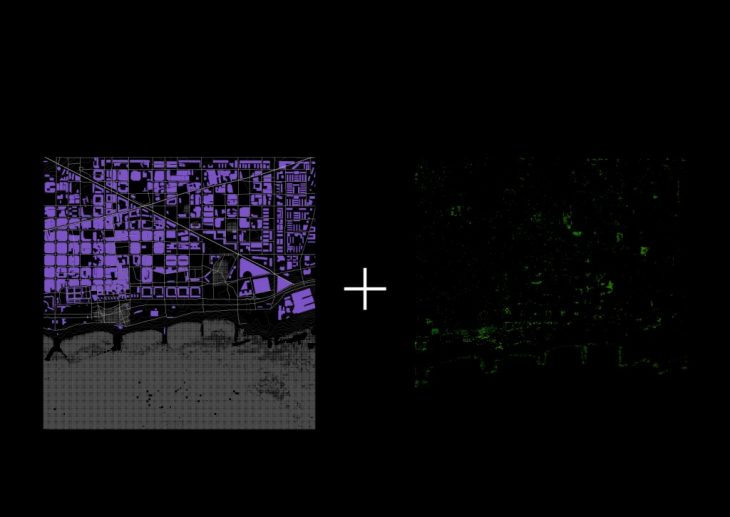
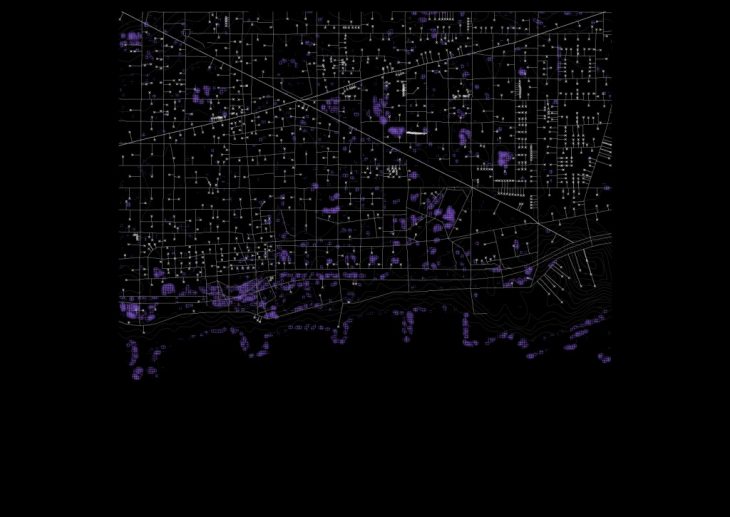
_existing biotic morphologies
Through an analysis of the above information, emerging patterns begin to be revealed
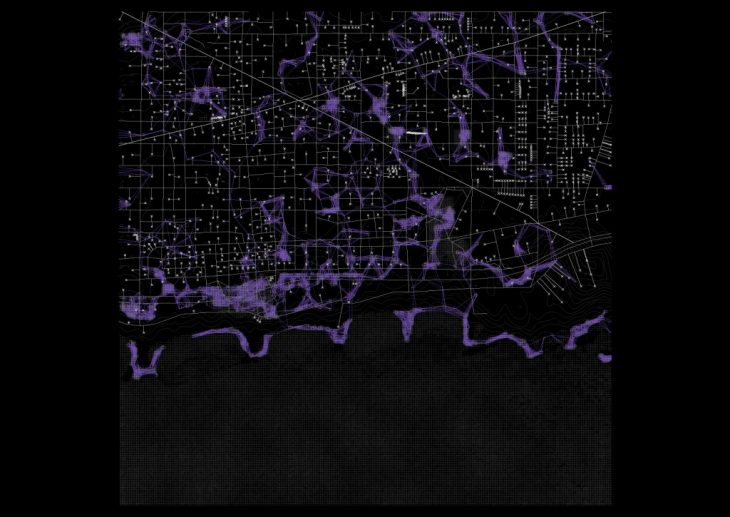
01_By connecting the areas of intense vegetation with each other, direct networks and biotic clusters are able to be seen
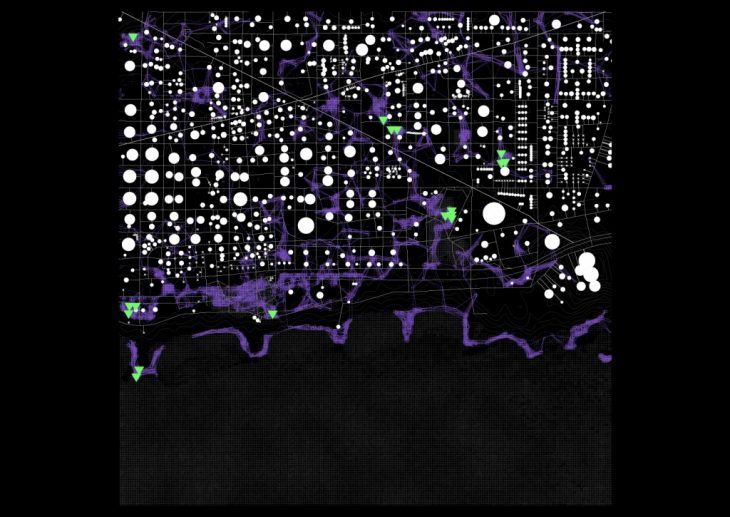
02_The above circles illustrate the existing buildings proportional to their respective emissions of Co2. Additionally, biotic hotspots (highest intensity of vegetation) are shown in green
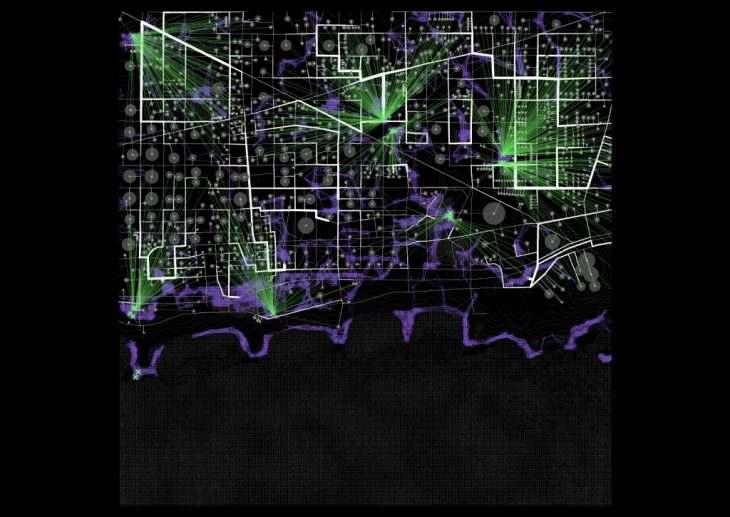
03_Through using direct absorption paths from buildings to their nearest biotic hotspot, we are able to visualise the road network as an organism that adapts and responds in width in relation to areas of intense vegetation – creating a representation of the city that reflects the relationships that exist within it
_adaptive biotic morphologies
Taking the above example, we are able to see how the city can adapt to its internal network in an isolated moment. But to further this, is to examine how it’s morphology responds to changing parameters – thinking about the city as an organism of constantly changing networks
The examples below illustrate how the site responds as the carbon absorption paths move towards the coast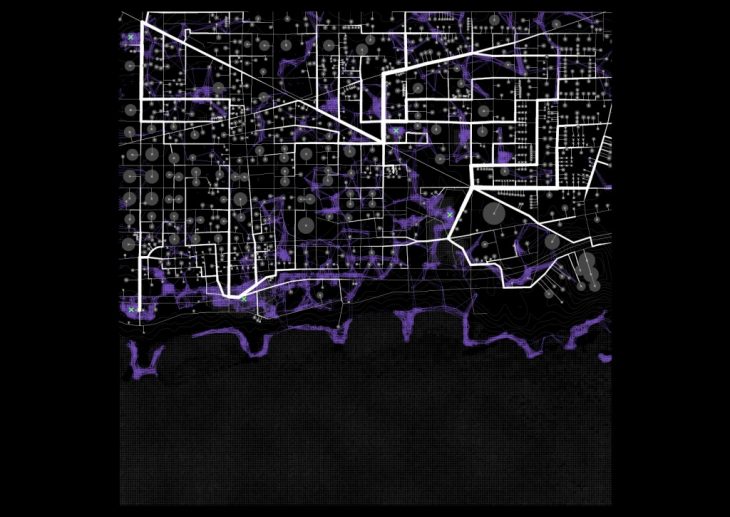
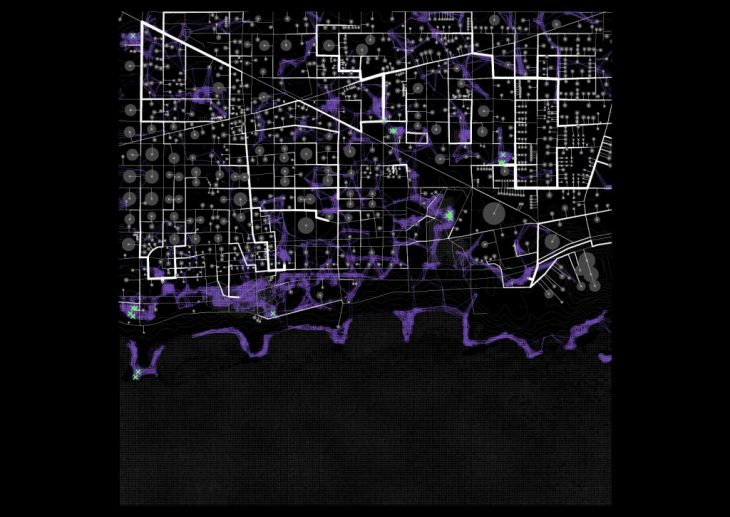
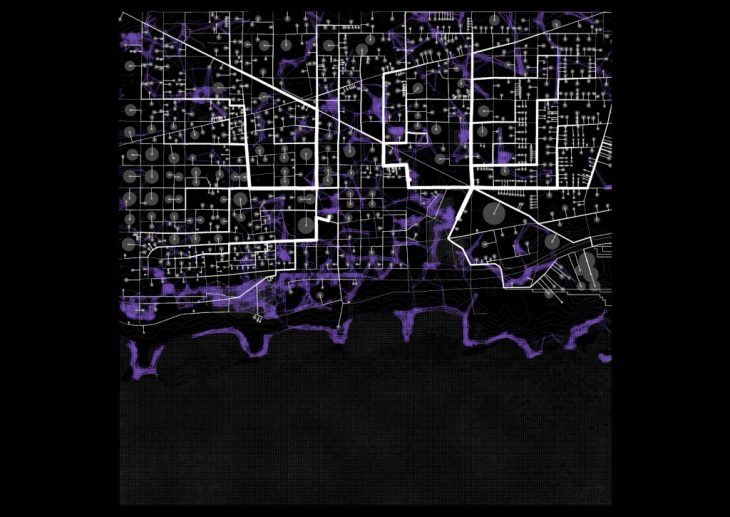
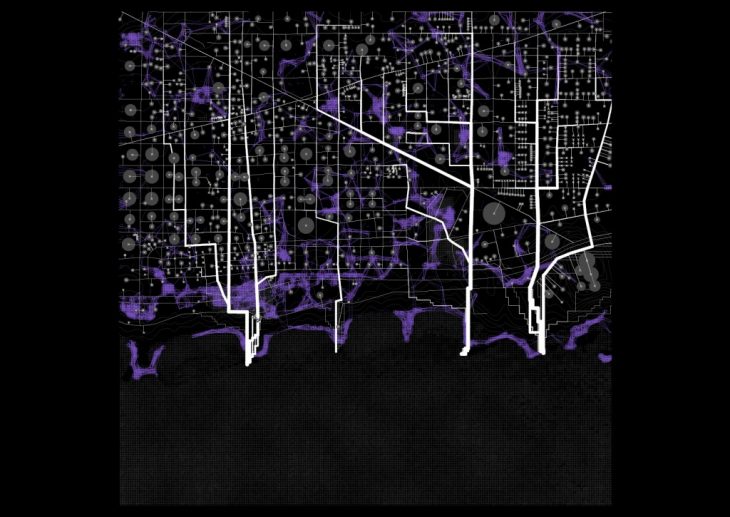
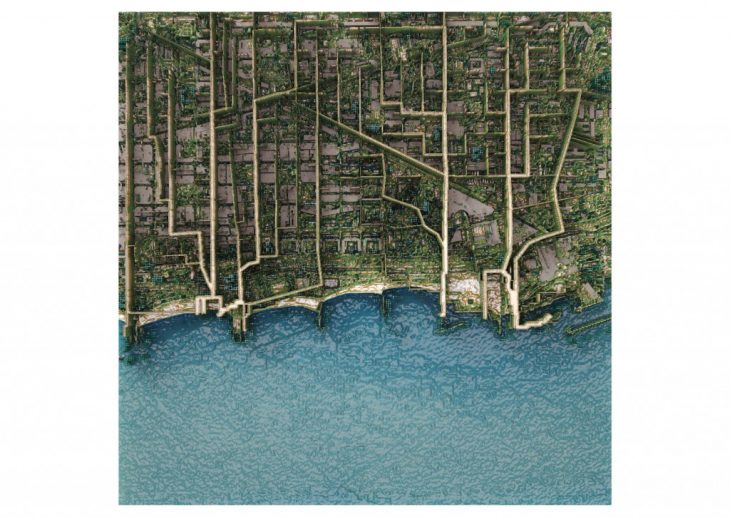
As the cityscape becomes dynamic and adapts to its internal networks, we reimagined the city as a unique morphology, taking on a new identity driven by data and relationships
However, up until this point, we have been examining the site within the constraints of its existing infrastructure, to break away from this requires a new interpretation of the city, one not governed or constrained by existing paradigms and conditions.
Introducing Physarum Slime Mold, a cellular organism that seeks food sources through scanning its context to obtain the minimal path of travel. Through examining its properties and growth, we are able to apply this at an urban scale.
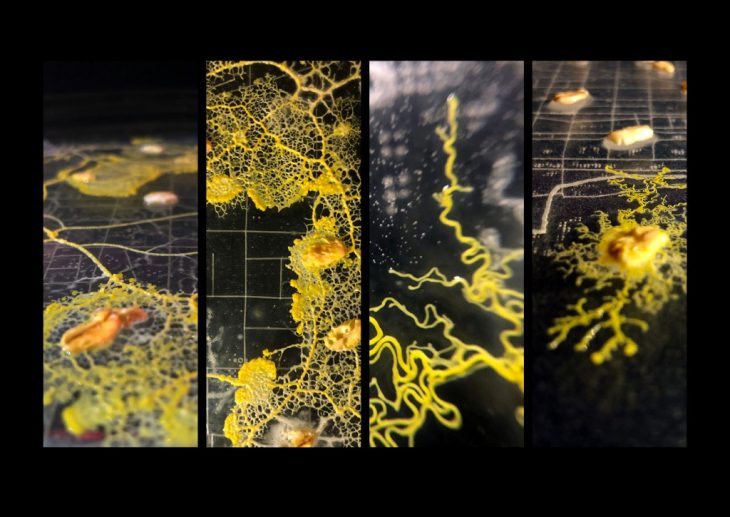
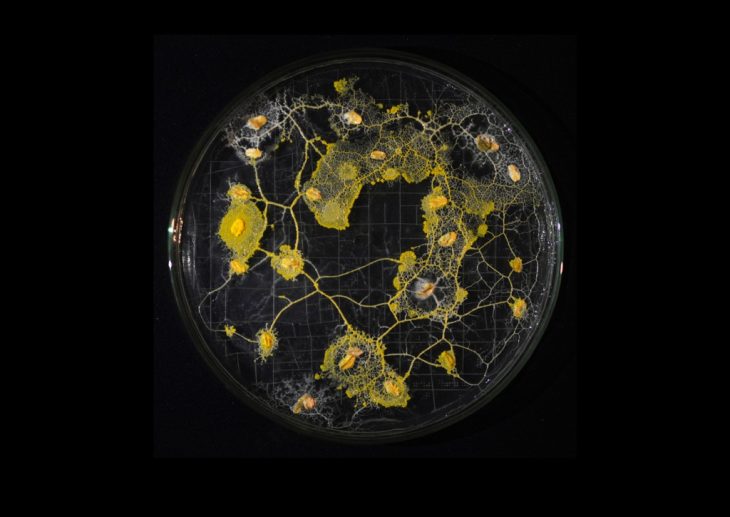
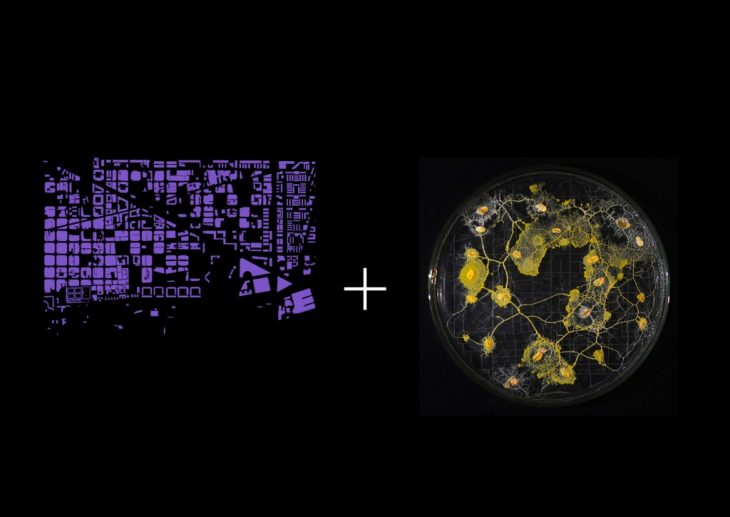
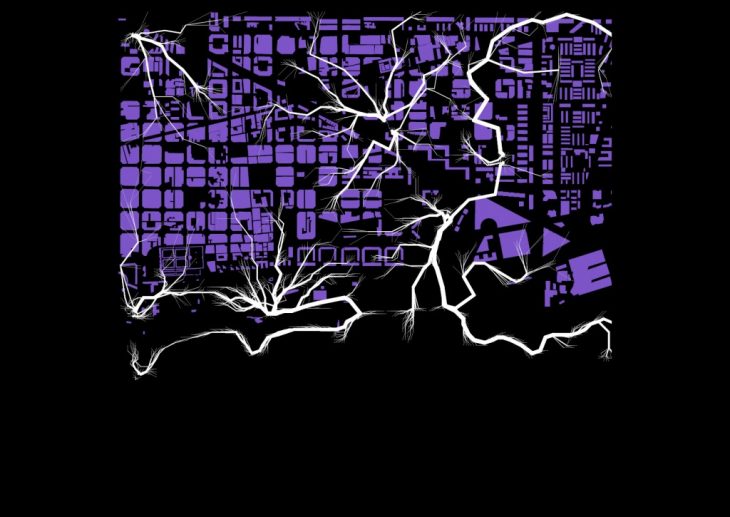
01_Using the biotic networks established earlier, we can apply the minimal path logic of the slime mold, illustrating the connections between all areas of vegetation to the most intense points on the site
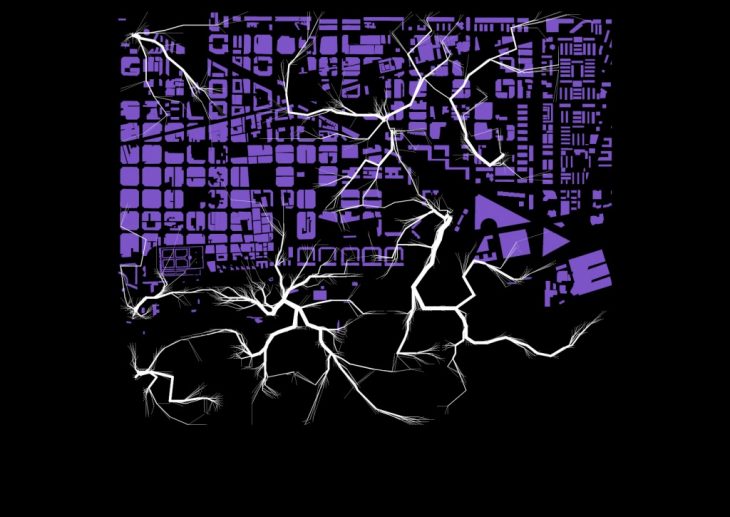
02_Building upon the first iteration, the network is able to be grown towards the ocean, crossing the physical threshold between the urban landscape and the ocean
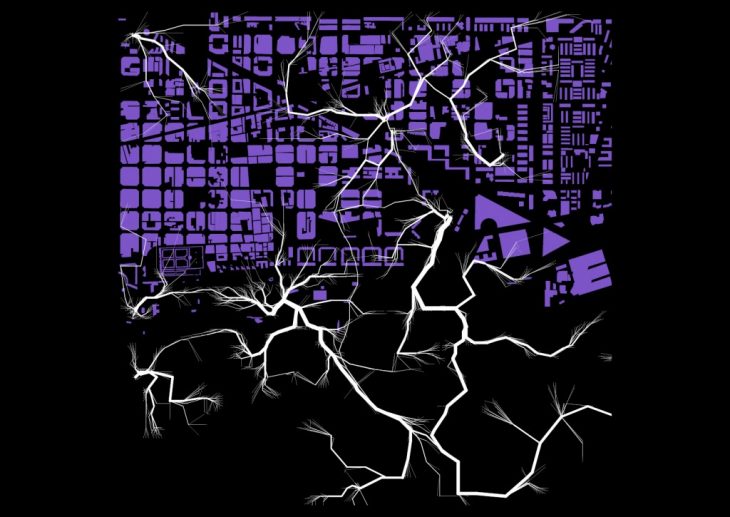
03_This network is further grown into the ocean treating the entire site as a single ecology as opposed to the urban/ocean segregation that currently exists
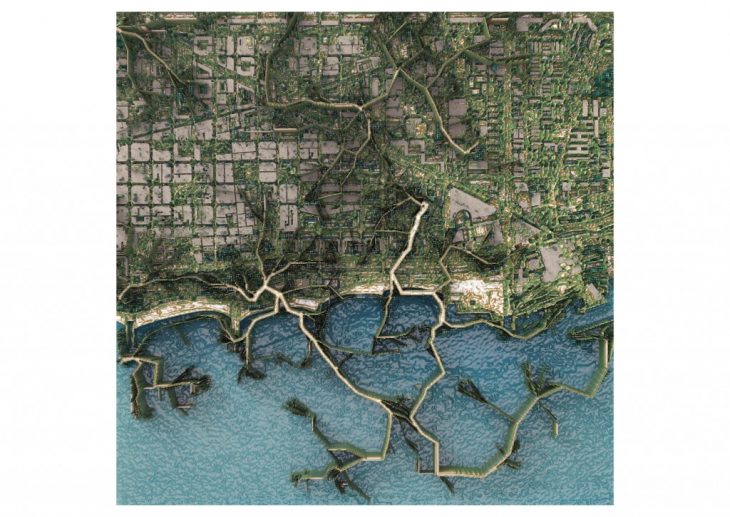
Barcelona reimagined with the new biotic network, independent of existing infrastructures and driven only by vegetation and organic growth
However, while this organic morphology breaks away from the rigid framework of the existing city, it is independent and is not feasible due to its lack of interaction with the existing networks
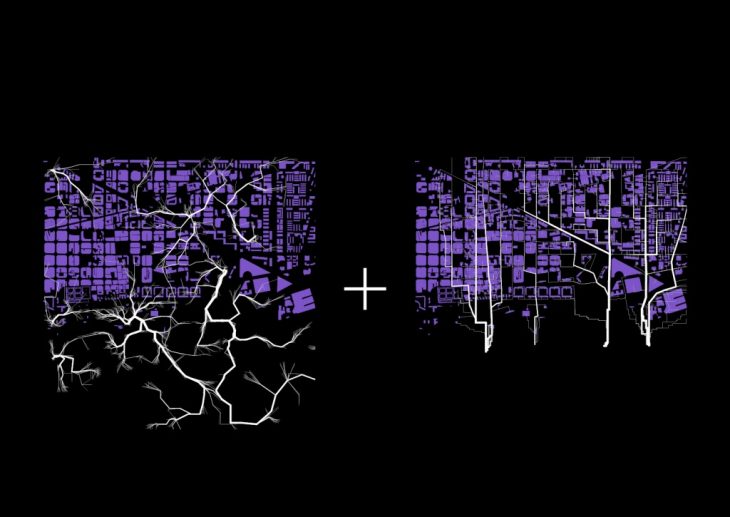
As a result, an integration of these two morphologies is required
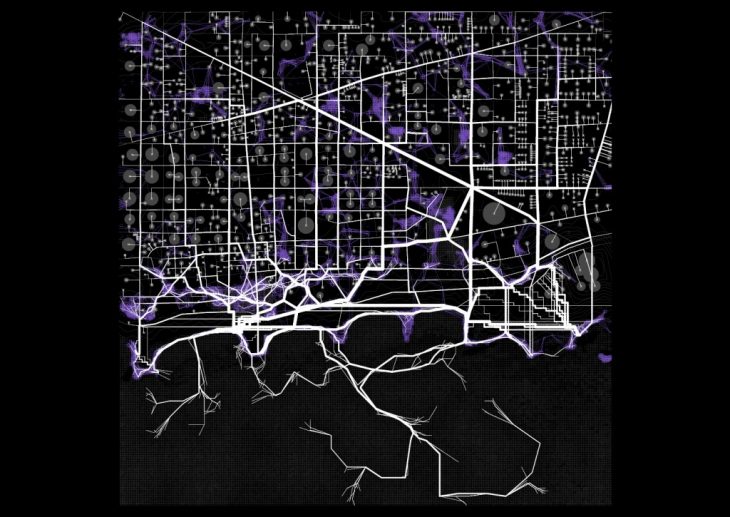
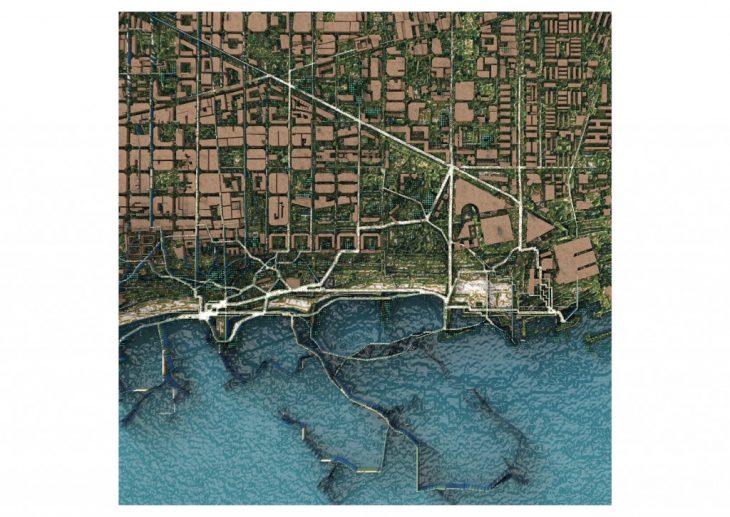
Beyond a superimposition, the above representation combines the morphology of the existing physical conditions with the organic network in order to create an integrated hybrid ecology that extends the city beyond its physical threshold – opening up new opportunities of urban exploration beyond the rigid constraints of existing infrastructures.
A marriage of human and non human ecologies to create new systems for the future.
WET.WARE BCN is a project of IaaC, Institute for Advanced Architecture of Catalonia developed at Master in Advanced Architecture, in 2018/2019 by:
Students: Jae Shin, Lakshay Ghai, Vien Nguyen
Faculty: Claudia Pasquero, Marco Poletto
Computational Expert: Konstantinos Alexopoulos